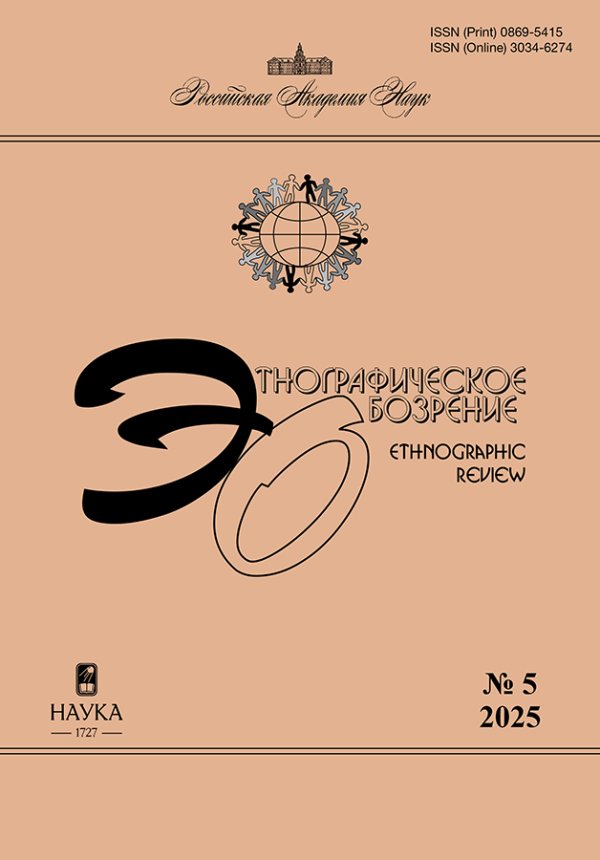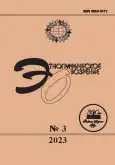No 3 (2023)
Articles
Anthropological study of european prostitution: experiences and perspectives
Abstract
 5-22
5-22


On “companions of joy”: the gender/ethnic composition of sex workers in modern Greece
Abstract
 23-42
23-42


Secretly and openly: the inscrutable ways of the forbidden profession in Albania
Abstract
 43-69
43-69


Female prostitution in contemporary Spain: uncertainty of the obvious
Abstract
 70-84
70-84


The “love for money” in Sardinia: on the question of an ethnoanthropological study of the phenomenon of prostitution in traditional society
Abstract
The article makes a novel contribution to anthropological studies by exploring the phenomenon of prostitution in Sardinia which remains a poorly urbanized conservative rural region of Europe, which still retains a high degree of cultural traditionalism. Due to the lack of research on this issue, I draw primarily on my own field material obtained as a result of many years of surveys conducted in the region, mainly in mountainous areas, that is the pastoral zone which is a set of introverted and patriarchal village microcosms with unusually strict social control and a rigid system of moral taboos. The principal difficulty in conducting this type of fieldwork is the uncommunicativeness and “closedness” of informants in any kinds of conversations involving topics of sex. I argue that there was an organic social “acceptance” of the institution of prostitution in the traditional society as an element that provided a mechanism for its social functioning and the preservation of social balance.
 85-103
85-103


Prostitution in Sicily: a look into the past
Abstract
The article makes a novel contribution to anthropological research by attempting an analysis of the phenomenon of urban prostitution within a specific historical period of the 1930-80s in the region of Sicily which has been culturally conservative and still maintains today a high degree of traditionalism. The study is drawn on an extensive range of field data that I have obtained in the course of long-term surveys, working with a vast array of respondents. I take a special approach to the topic, addressing the historical past, past experiences and reflections of people, as well as information preserved in the memory of ancestors. These sources together make it possible to explore and recreate the appearance of the “traditional” prostitution that is seen today by the majority of the population of Sicily as “ideal” and contrasted with its modern (“alien”, “criminal”, “dirty”) forms. The study not only highlights an important sociocultural phenomenon that has gone into oblivion but also lets us identify the reasons for its popularity in the region and its perception as an organic element of the local culture, closely related to the ethnic and cultural identity of Sicilians.
 104-124
104-124


Craniometric study of Central Asian population at the turn of the era: multivariate statistics versus typological approach?
Abstract
 125-149
125-149


Whom did the karasuk people resemble?
Abstract
 150-164
150-164


Not only former colonies but the whole contemporary world is postcolonial
Abstract
 165-186
165-186


Visual image of the ainu in paintings and engravings of the 16th - early 19th centuries: historical and ethnographic source or artist’s imagination?
Abstract
 187-205
187-205


Embodiment in biographical narratives of non-heterosexuals
Abstract
 206-225
206-225


Surviving fragments: regaining the Shirokogorov archive A Review ofPuteshestviia cherez sibirskuiu step’ i taigy k antropologicheskim kontseptsiiam.Etnoistoriia Sergeia i Elizavety Shirokogorovykh: V 2 t. T. 2. Ch. 1, 2
 226-231
226-231


To be heard by the authorities and society [byt’ uslyshannym vlast’iu i obshchestvom]: a review of Antropologiia i etnologiia: sovremennyi vzgliad
 232-236
232-236


The old-believing of nowadays as a live memory a review of prozhivaemaia istoriia: kak staroobriadtsy vspominaiut o svoem proshlom
 237-242
237-242












